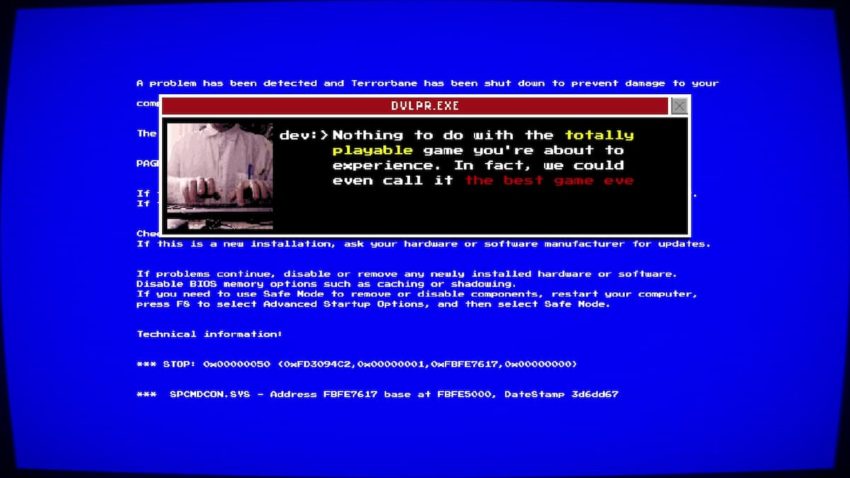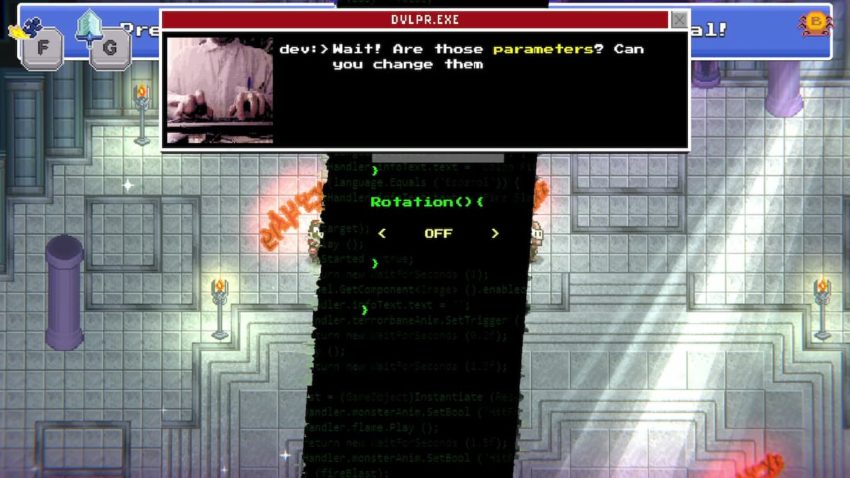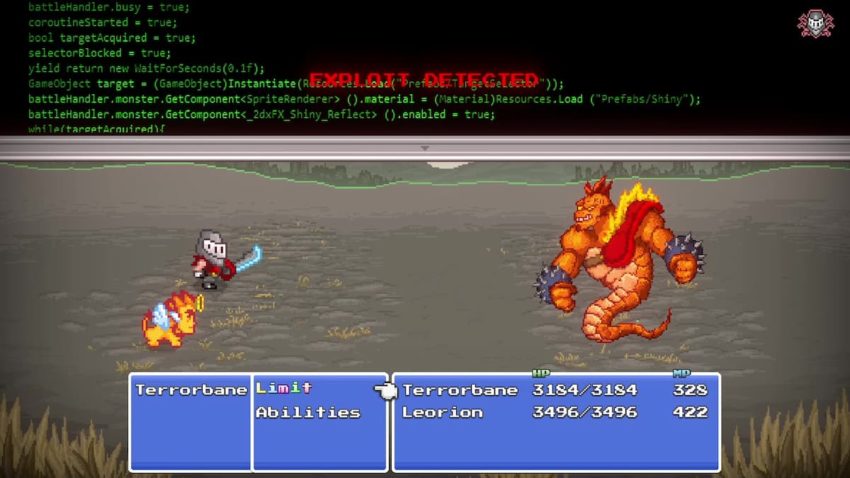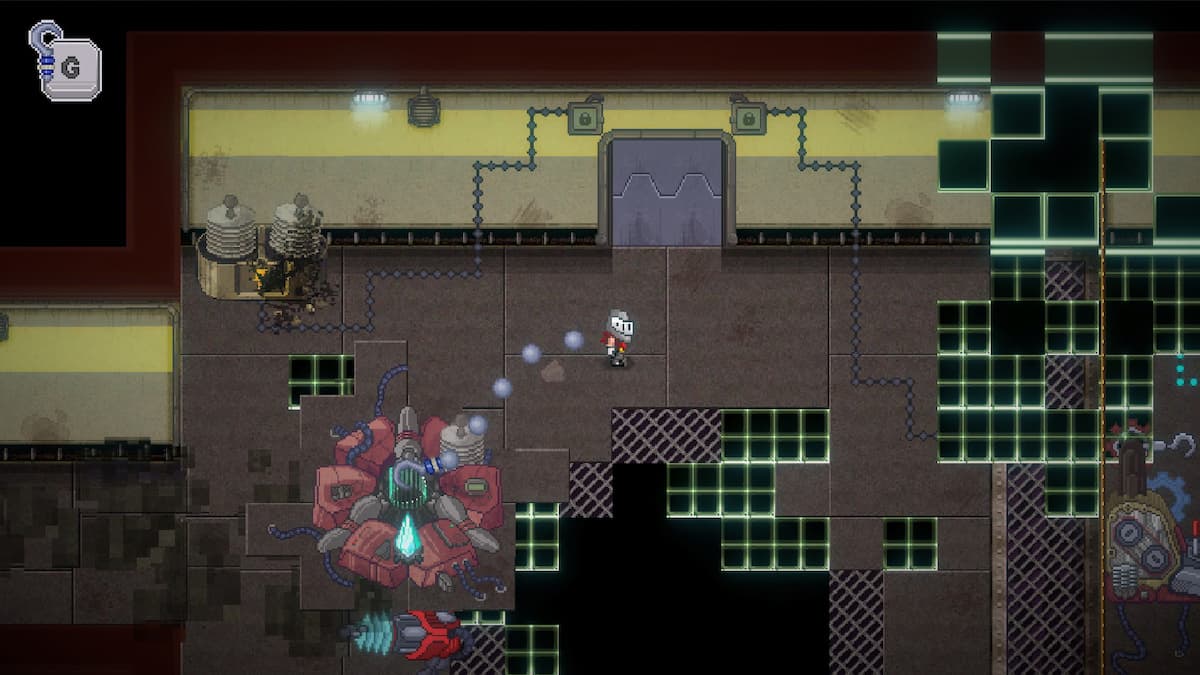Perhaps more than any other type of creative endeavor, indie game developers need a way to stand out. Some of the most obscure indie titles still retain a voice of their own — RPG Maker horror games, for example, tend to run along the same lines as each other. Yet, Ib is different from Angels of Death, which is different from Mad Doctor, and so on. While indie games may contain references to other games and series, typically it is done sparingly — and when it’s not, usually there is a theme or identity that serves a purpose to cover. Not so in tERRORbane, a game that clearly has a lot of heart put into it, but fails to retain any sort of identity on its own.

tERRORbane (TB from here on out) evokes another indie title that came out a few years ago: Evoland. Both games clearly show a love for the history of video games, with the games jumping from genre to genre. Evoland, for example, starts off as Zelda-like before eventually evolving into a modern Final Fantasy or Y’s-style game, while TB tends to stick to the SNES/Game Boy style of RPGs, shuffling through different examples of the era. The pull of TB, however, is pushed more towards the back end of gaming — the code that runs in the background.
Used as a plot device, the “developer” of the game is not particularly good at coding, and as such, his game is full of errors. Things such as NPCs being stacked on each other, or being able to walk on water tiles, or having a box of pears join your party mistakenly are just a few of the “bugs”. The goal of the game is simply to progress through it, but the secondary objective is to fill out a list of these bugs by discovering all of them — doing so unlocks the True Ending. As you progress through the game, the game itself changes from a Dragon Quest-style RPG into a Pokemon TCG-style game into a top-down arcade shooter. Instead of worrying about stats or party members, you instead solve puzzles with your sword, which has Developer Console privileges and can edit code at will.

When I first heard of TB, I assumed that this would be a game where you repaired bugs via actual code writing — sort of a “play while you learn” style of game. Assumptions are dangerous things, and typically when writing about games what you assume things are and what actually is are totally different things. I try not to let my expectations get in the way of what I’m actually playing, and yet I can’t help but shake the feeling that TB lacks any real identity. The ways players fix the errors, for example, simply involve toggling an on/off option or cycling through different choices. There is no actual code editing outside of scripted events, which left me extremely disappointed. You can’t truly break the game or alter it in any meaningful way.
TB, in actuality, is closer to a visual novel with a few WarioWare-style minigames than anything with involved gameplay. You’re simply going from location to location, occasionally toggling options from A to B or On to Off, and listening to the Developer whine and chew their way through dialogue about how you’re “breaking the game”. The dialogue in visual novels typically makes or breaks how enjoyable an experience it is. I can’t really say I enjoyed listening to the faceless developer constantly whining about development woes. The irritating feeling became apparent early on in the game, and progressing through the True Ending didn’t really change my opinion.

tERRORbane is a short game, only taking about 4-5 hours to complete — and for $16, the cost isn’t steep. Supporting smaller development teams is always a goal of mine, but I would like to see BitNine Studio create a game that doesn’t rely on references to other, more popular titles or bottom of the barrel self-deprecating narration. The game is full of obvious heart, and you can tell BitNine truly put their all into what they created, but it feels hollow and simply reminded me of other games to play instead.







Published: Apr 4, 2022 11:29 am